Huang Yong Ping, a renowned contemporary Chinese artist, has left an indelible mark on the art world with his unique blend of Chinese philosophy and Western aesthetics. His iconic Serpent d’Ocean sculpture is a testament to his artistic vision, capturing the imagination of audiences worldwide. Let’s delve into the profound symbolism of this masterpiece and uncover the legacy it has left behind.
Huang Yong Ping’s Background and Inspiration
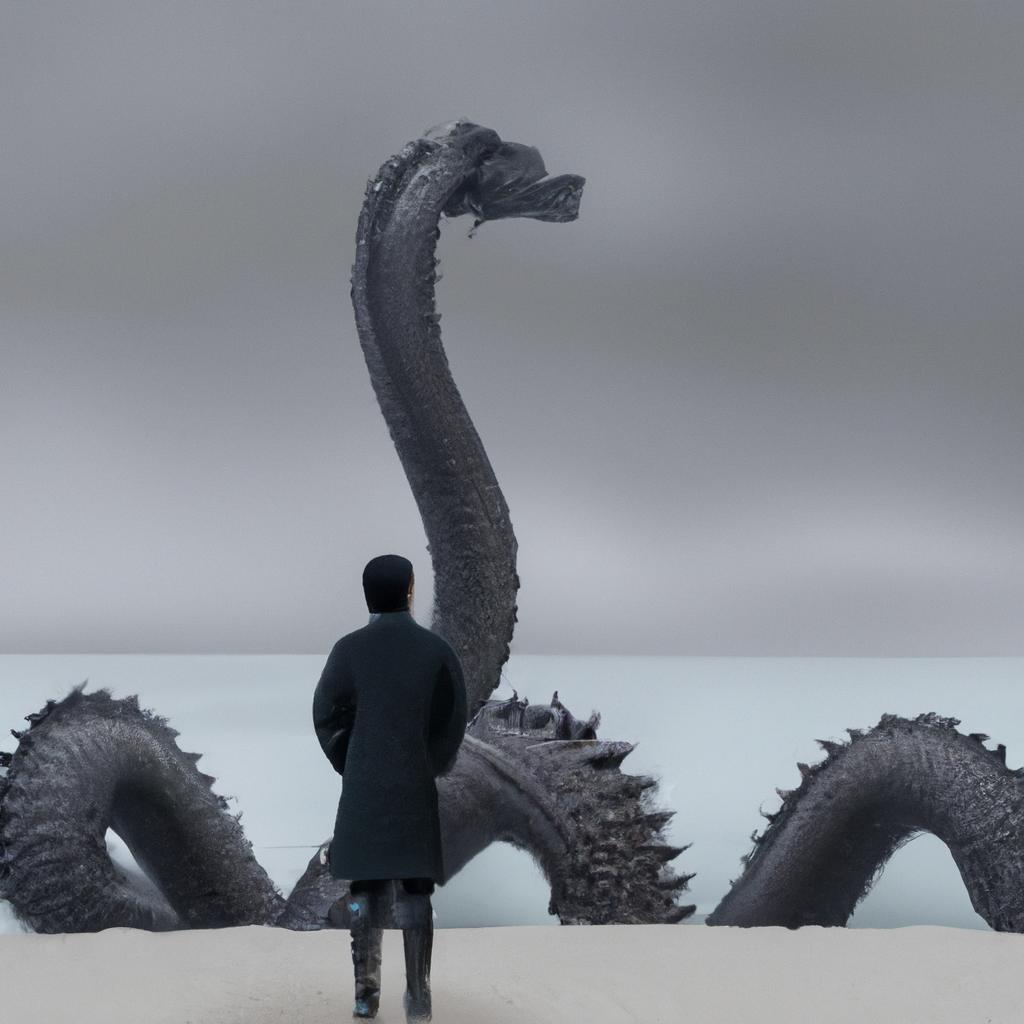
Upbringing and Education
Born in Xiamen, China, in 1954, Huang Yong Ping’s artistic journey was deeply influenced by the tumultuous times of the Cultural Revolution. He studied at the Zhejiang Academy of Fine Arts, immersing himself in the diverse forms of art, from calligraphy to sculpture. Following his graduation in 1982, he ventured to Paris, France, where he continued honing his artistic skills and exploring novel expressions.
Influence of Chinese Culture and Philosophy
Huang Yong Ping’s artwork finds its roots in Chinese culture and philosophy. Ancient Chinese myths, legends, and symbols, such as dragons, serpents, and Taoism, inspire his creations. His works reflect his fascination with the relationship between nature and human society, the duality of life and death, and the cyclical nature of existence.
How He Came Up with the Idea for the Serpent d’Ocean
The Serpent d’Ocean sculpture, commissioned by the city of Nantes, France, in 2012, was Huang Yong Ping’s opportunity to embody the city’s rich history as a major port and its connection to the sea. The sculpture represents the cultural diversity and openness to the world that Nantes symbolizes. By evoking the serpent from Chinese mythology, a symbol of transformation and cultural blending, Huang Yong Ping created a magnificent artwork that resonates with people from all walks of life. The sculpture took three years to complete and was unveiled in 2012, receiving widespread acclaim.
The Serpent d’Ocean Sculpture
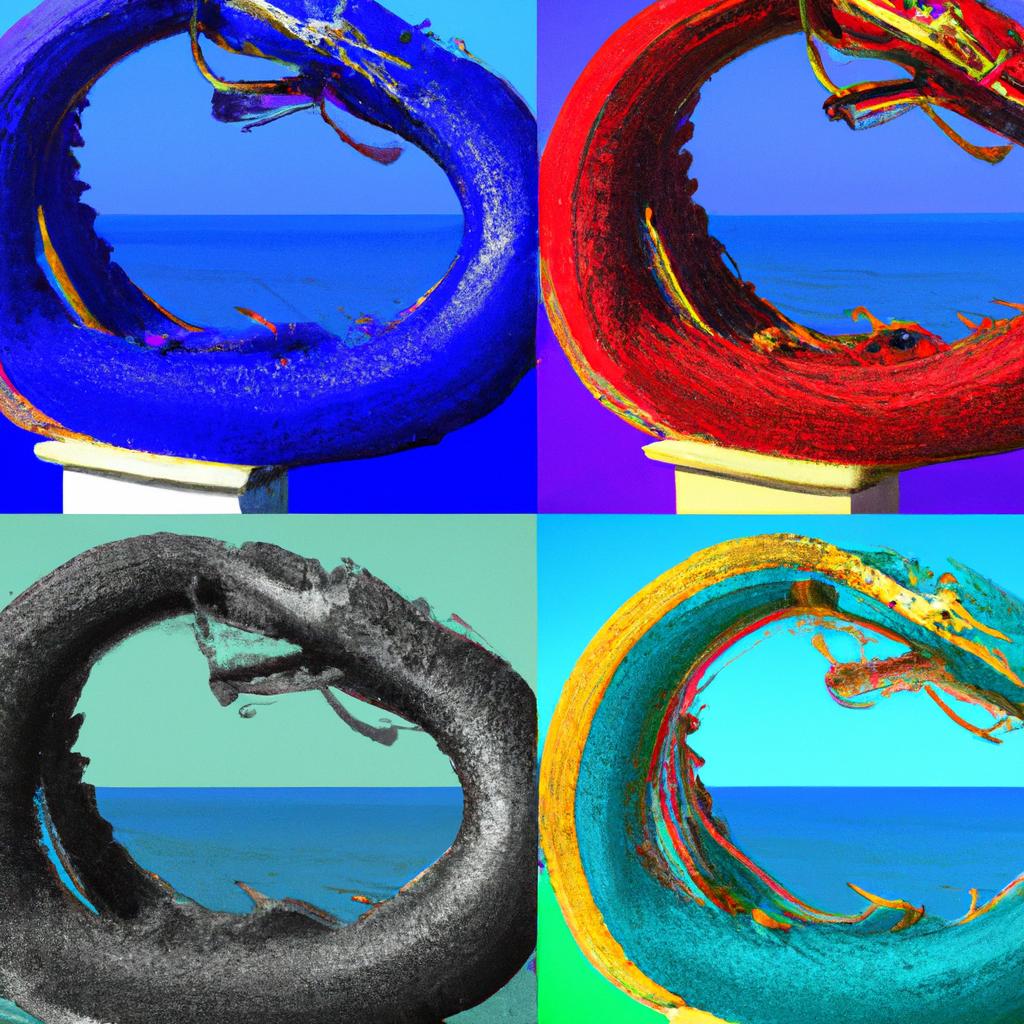
Huang Yong Ping’s Serpent d’Ocean sculpture is an awe-inspiring masterpiece that leaves a lasting impression on all who behold it. Stretching 130 meters in length, this enormous serpent of aluminum and steel coils around the island of Nantes, France.
Description of the sculpture’s physical appearance
The Serpent d’Ocean is a magnificent sight to behold. Its body consists of meticulously crafted aluminum plates that resemble scales. The serpent’s head and tail, made of steel, emerge gracefully from the water, captivating viewers.
Symbolism behind the serpent and its significance in Chinese culture
In Chinese mythology, the serpent is a powerful symbol of wisdom and transformation, representing the continuous cycle of life and death. Huang Yong Ping masterfully captures the essence of this symbol in the Serpent d’Ocean sculpture.
The serpent’s coils around the island reflect the eternal cycle of life and death, while its head and tail emerging from the water signify the beginning and end of this cycle. The sculpture’s location on the island also holds significance, representing the serpent’s connection to the vital element of the sea in Chinese mythology.
Interpretation of the artwork’s meaning
The Serpent d’Ocean sculpture can be interpreted in various ways, depending on the viewer’s perspective. Some see it as a commentary on the intricate relationship between humanity and the natural world. Others perceive it as a representation of the cyclical nature of life and death.
Regardless of the interpretation one chooses, the undeniable truth remains: this iconic work of art possesses a remarkable power and beauty. The Serpent d’Ocean sculpture is a testament to Huang Yong Ping’s skill as an artist and his ability to create pieces that resonate with people across cultures and generations.
The Controversy Surrounding the Serpent d’Ocean
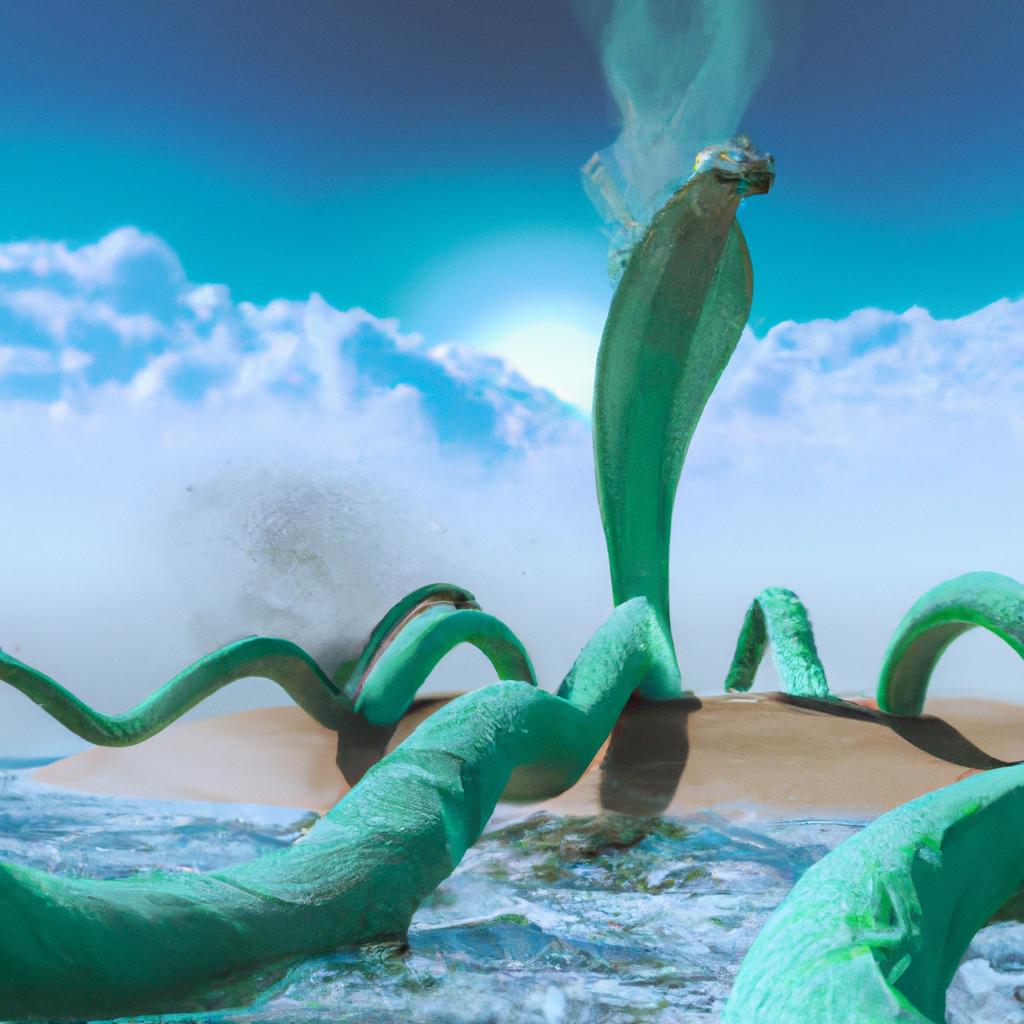
The Serpent d’Ocean sculpture has not been immune to controversy. Critics from the French public and media have questioned its value and relevance, giving rise to debates that challenge its significance.
Criticism from the French public and media
From the sculpture’s inception, some members of the public and local politicians have raised concerns about its cost. With an estimated price tag exceeding 3 million euros, they argue that the funds could have been better allocated to social programs or other cultural projects.
Media outlets have also joined the debate, labeling the artwork as “ugly” and “meaningless.” They question its design and its impact on the city of Nantes. Some go as far as suggesting that the sculpture symbolizes China’s growing influence in the West, sparking cultural imperialism concerns.
Response from Huang Yong Ping and his supporters
In defense of the Serpent d’Ocean sculpture, Huang Yong Ping and his supporters highlight its transcendence of cultural and political boundaries. They emphasize that the artwork is not solely a symbol of China but also of the global community. Moreover, they stress the importance of art in fostering dialogue and understanding between cultures.
In response to the criticism, Huang Yong Ping released a statement explaining the symbolism and meaning behind the Serpent d’Ocean sculpture. He underlined the significance of the serpent as a representation of transformation, renewal, and the celebration of nature and the environment.
Impact of the controversy on the artwork and artist’s reputation
The controversy surrounding the Serpent d’Ocean sculpture has had both positive and negative effects on the artwork and Huang Yong Ping’s reputation. On one hand, it has drawn attention to the sculpture and increased its visibility in the art world. On the other hand, questions have arisen regarding the value and relevance of contemporary art in society.
Despite the controversies, the Serpent d’Ocean sculpture remains an important work of contemporary art that challenges traditional perceptions of art and architecture. It stands as a testament to Huang Yong Ping’s artistic vision and his commitment to exploring new avenues of expression.
Legacy of the Serpent d’Ocean and Huang Yong Ping’s Artistic Career
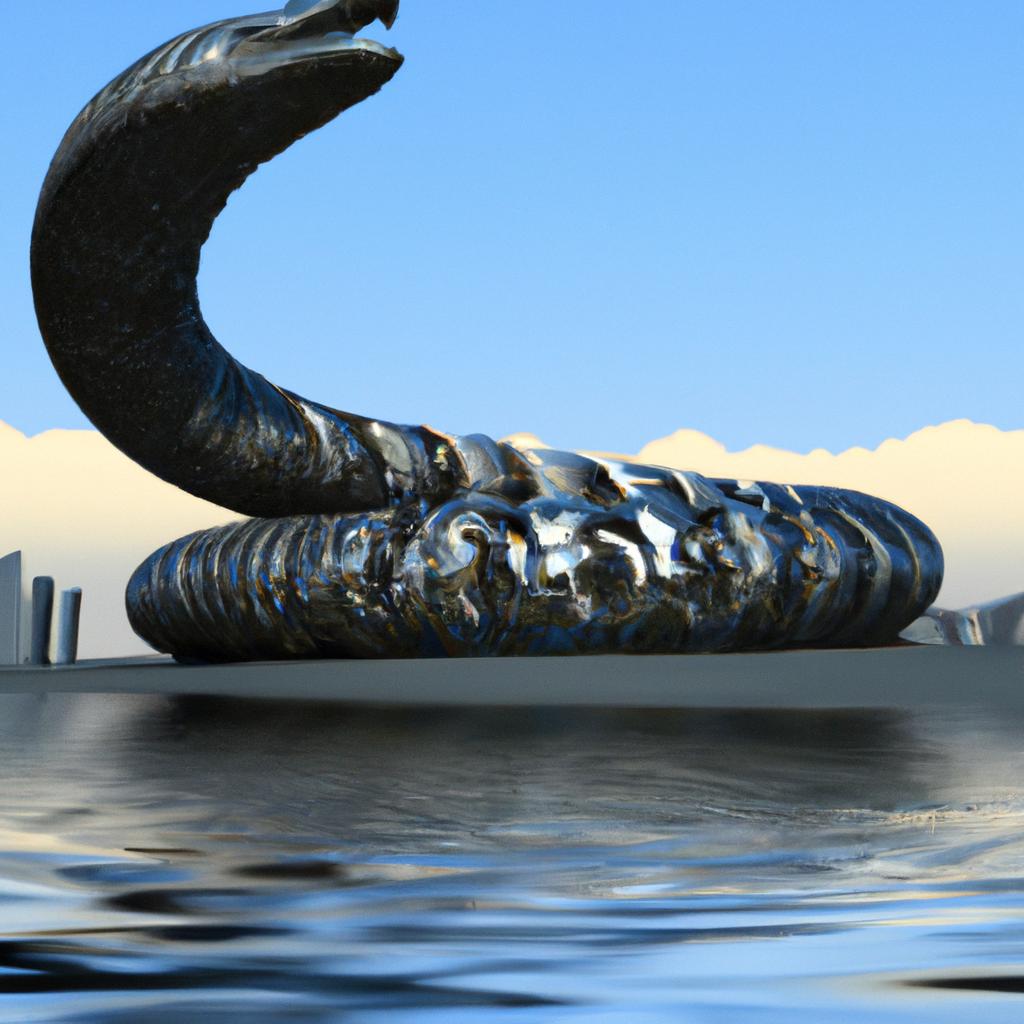
Influence on Contemporary Art and Artists
The Serpent d’Ocean sculpture has made a significant impact on contemporary art and artists. Its unique design and symbolism have inspired many artists to explore new forms of art that integrate environmental and social issues. The artwork’s ability to challenge the traditional boundaries of art and architecture has paved the way for more collaborative and interdisciplinary projects.
An exemplary manifestation of the Serpent d’Ocean‘s influence is the “Serpentine Pavilion” in London. Inspired by Huang Yong Ping’s sculpture, Chinese artist Ai Weiwei and Swiss architects Herzog and de Meuron designed a pavilion featuring a serpent-like structure made of steel and glass, with a reflecting pool at its center. The pavilion attracted thousands of visitors from around the world and proved to be a resounding success.
Other Notable Works by Huang Yong Ping
Huang Yong Ping’s artistic career boasts many remarkable works that have garnered global recognition. Among them is “Theater of the World,” exhibited at the Guggenheim Museum in New York in 2016. This artwork comprises a circular arena filled with live insects, reptiles, and amphibians, symbolizing the cycle of life and death and the interdependence of all living beings.
Another notable work is “Bat Project,” showcased at the Venice Biennale in 2003. This artwork features a giant bat constructed from airplane parts, representing the clash between Eastern and Western cultures and the environmental impact of modernization and globalization.
Legacy of the Serpent d’Ocean in the Art World
The Serpent d’Ocean sculpture has left an enduring legacy in the art world. It has inspired numerous artists to venture into new art forms that integrate environmental and social issues. By challenging the traditional boundaries of art and architecture, this masterpiece has paved the way for collaborative, interdisciplinary projects.
Furthermore, the sculpture has become a symbol of cultural diversity and a Nantes landmark. It attracts countless visitors from around the globe, putting the city on the contemporary art map. By raising awareness about environmental concerns and the importance of preserving our natural resources, it serves as a poignant reminder of our responsibility to the world we inhabit.
In conclusion, the Huang Yong Ping Serpent d’Ocean sculpture stands as a masterpiece in the realm of contemporary art. Its remarkable design and profound symbolism have captivated audiences worldwide. Huang Yong Ping’s artistic contributions extend beyond this sculpture, challenging traditional perceptions and inspiring new artistic perspectives. As TooLacks, we eagerly anticipate witnessing more innovative and thought-provoking creations from this visionary artist.
Conclusion
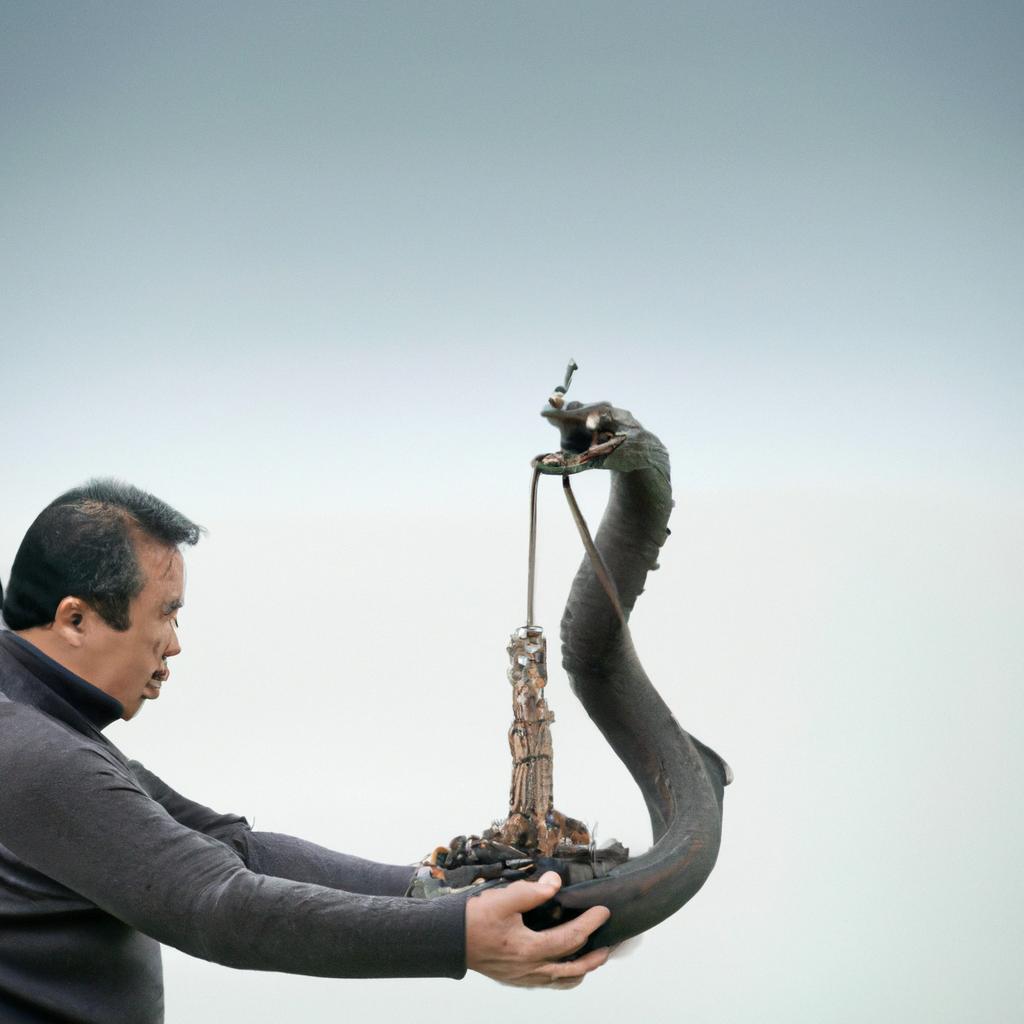
In conclusion, the Huang Yong Ping Serpent d’Ocean sculpture is a masterpiece of contemporary art that has made a profound impact on the art world. Its striking design and deep symbolism continue to captivate audiences and inspire artists to explore innovative art forms that address pressing environmental and social issues.
Huang Yong Ping’s artistic career has left an enduring legacy. His unique fusion of Chinese philosophy and Western aesthetics has challenged conventional boundaries, encouraging us to rethink our understanding of art and culture.
We hope you enjoyed this journey through Huang Yong Ping’s life, along with the significance of the Serpent d’Ocean sculpture. As TooLacks, we invite you to explore further the world’s art and culture on TooLacks. Thank you for joining us on this artistic voyage, and may your appreciation for the beauty and meaning of this iconic artwork continue to grow.



